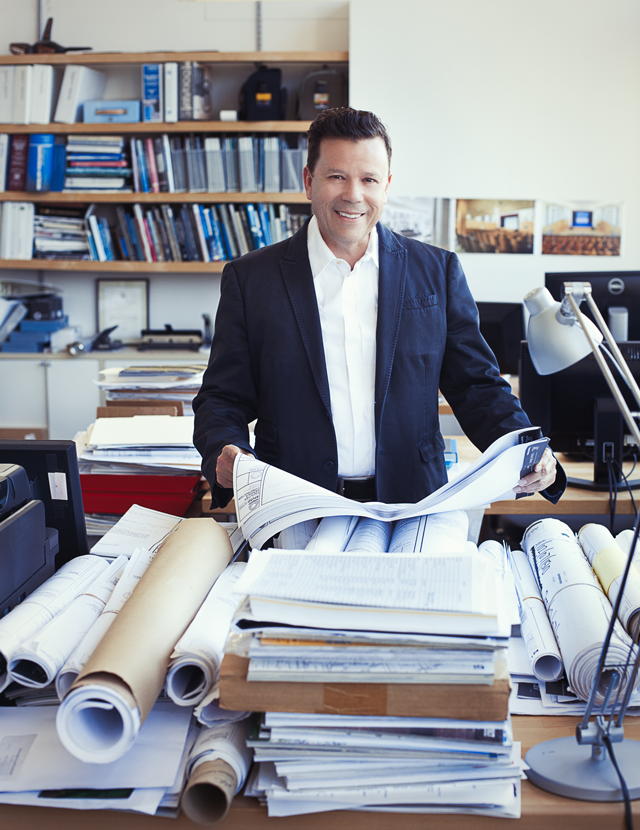I have always been a minimalist who enjoys organizing my surrounded environment to create balanced, functional and sophisticated space. I know that my lifestyle, neatness, and need for everything to be well organized played a strong role in my growing success as a headshot photographer.
When I first moved to the US, I was in a culture shock from how much stuff people had (especially clothes!). I witnessed closets breaking apart, garages that were filled from floor to ceiling without any room for a car, and hundreds of pillows on couches and beds...
I met Kaylee at a Wealth Entrepreneurs Event and learned that she is a professional organizer and owner of CLOSETED. I was very interested to find out how she transformed her lifestyle into an exciting business. We live in a heavily consumerist era. It is so easy to become a slave of materialism, and to get trapped in the disorganization of everything that you didn’t need in first place.
Here’s what Kaylee says in her bio:
“I was interested in interior design because I loved the idea of curating an inviting environment for a family to come home to. But after being in dozens of beautiful homes and seeing inside their messy private areas it felt like a sham. How could an individual feel relaxed when their closet, home office or bathroom cupboards were in complete disarray?"
Kaylee’s business philosophy resonates with my lifestyle and I can’t wait to share this interview so you can benefit from having less clutter and more room for creativity. I’m thankful that Kaylee found time to stop by my portrait studio for my Creative People in Business project and share her knowledge of organizing.
© 2016 Valentina Sadiul Photography
Time you wake up: Between 5-6 A.M.
Morning routine: Shower, make-up, cook breakfast while I empty the dishwasher, eat, brush teeth, style hair, get dressed.
Best habit: Meal planning. I always recipe search, shop and cook ahead of time so when it comes time to make breakfast or pack lunch I always have options to choose from. I make healthy food choices and never skip a meal which allows me to stay on my A game.
Worst habit: Worrying. On some level I know my clients appreciate that I worry about things so they don't have to but spending time worrying doesn't change an outcome. I know I'm capable of handling problems big and small so someday I'd like to evolve out of the worry-about-it step.
Personal philosophy: Be kind, do the right thing. Being nice to people is free AND easy. People who choose to have a bad attitude waste a lot of time and energy and that is not a way that I want to spend those precious resources. I find that I can diffuse difficult situations with a vendor or installer by staying calm, respectful and friendly.
Book you are reading now: I just started The Hundred Secret Senses by Amy Tan. I like to switch between novels and informative literature rooted in subjects like organizing, nutrition and personal growth.
Most used apps: I am not a big app downloader but I use Uber and Lyft a fair amount as well as Pandora and Whole Foods.
What you do before going to bed: Wash my face, brush my teeth and pack any items I will use the next day at work.
Time you go to sleep: 10 P.M.
How and why did you decide to pursue a career as a professional organizer?
My degree is in interior design and I was working for a designer (turned friend/mentor) who handed me my first organizing job because he noticed I was good at it. I organized as a side job for several years and then my husband pushed me to make it a full time business.
From your experience, what areas of people’s homes most need help with decluttering?
It's really different for every home but I like to start with smaller areas because usually once a client sees how much we can accomplish together they feel excited about moving on to larger areas.
Whether it’s donating, gifting, or trashing, how do you help your client let go of their clutter?
Some clients are extremely mentally ready to purge their homes, they just need a little hand holding and someone to validate that their instincts are correct, for these people my advice is to trust yourself. Others need to really talk through each item, with these clients I ask them a lot of questions about why they feel the need to hold onto specific items or an excessive amount of stuff in general. I never make anyone give anything up but I will make strong suggestions. If we are sorting a lot of sentimental items I ask clients to share their memories with me, sometimes re-living a memory about an object is enough to make you feel ready to set it free. My clients see that I am passionate about what I do so they learn to trust that I have their best interested at heart.
What is your advice for shopping while avoiding becoming trapped in a heavily consumerist society?
We are already trapped in a heavily consumerist society. I try to remind people that shopping is fun but it becomes not fun when you have no where to put the things you buy and/or you can't find things you know you purchased. That's a sure sign you have a problem. I think being more aware of what you are buying (online and in stores) is part of the process, the other part is to always be thinking of what you don't need anymore. I have a "donation box" in all of my clients homes, as soon as you realize you don't need something you throw it in the donation box, when the donation box is full you seal it up, put it in your car and take it to be donated, then you start another donation box.
In a shared environment, how do you compromise and maximize space for roommates or a whole family?
I try to use wall space as much as possible to get things off the floor and I also like using furniture that can double as storage.
Very often, highly organized people marry partners who are okay living in an overwhelming mess. How would you approach the conversation about decluttering and inspire a “messy” person to see the benefits of being organized?
Sometimes couples use me as a wedge, they want me to help gang up on their spouse and shame them into an organized lifestyle, I don't go in for that type of thing. Itry to develop a bond with each family member and that means asking everyone about their goals for the space. Knowing that I have multiple interests at heart makes clients more amenable to hearing my ideas and doing the work to clear their space and make room for a plan that encompasses everyone's goals.
What storage solution is “a must” to stay organized in the long run?
Files are a non-negotiable. If you are an adult person you need a way to manage your paperwork (I created my personal filing system at age 11.) Some of my clients run a business out of their residence, they are probably going to need a tall file cabinet or a chest of drawers dedicated to files. For clients like home makers I can get away with smaller solutions but when you consider the paperwork you need to run a house (insurance, taxes, each family member's medical/school records just to start) it adds up fast and if you want an organized home you need a system for paperwork.
The other thing I do for almost every client is to organize their bathroom products in clear plastic shoe boxes. I sort like items then I label each box so when you cut yourself all you have to do is grab the first aid box and your band aids will be right there or if you are going on a trip then you pull the box that says travel toiletries and anything you may need is at your fingertips.
What is your best advice for overworked business people trying to stay organized?
Hire me! Organizing is not a magic bullet, it's work and at some point something's got to give and if you spend so much time working that you have very little time for organization then it might be time to admit to yourself that organizing is not your favorite thing and it's worth it to you to hire someone to help. For my clients that go through the initial organization process and still have trouble taking time to stay organized I offer "touch-up" sessions which usually happen quarterly.
I know you love to organize, but I am sure you feel overwhelmed after a work day decluttering for your clients. How do you recharge?
I love to cook. If I feel too tired to cook an entire meal then I just prep my next meal and when I go to make it the next day my job is much easier. If I am feeling very overwhelmed I will organize something small like the fridge or my desk. That small achievement helps me clear my head and prepare myself for the bigger achievements that await me in the near future.
What daily habits allow you to stay organized?
Always unpack as soon as you get home. If it's your gym bag, purse, groceries, the clothes you bought online and received at work, unpack everything right away. If you spend a little time picking up after yourself daily you save a lot of time in the long run because you have less picking up to do and you don't spend time trying to find things you failed to put away.





